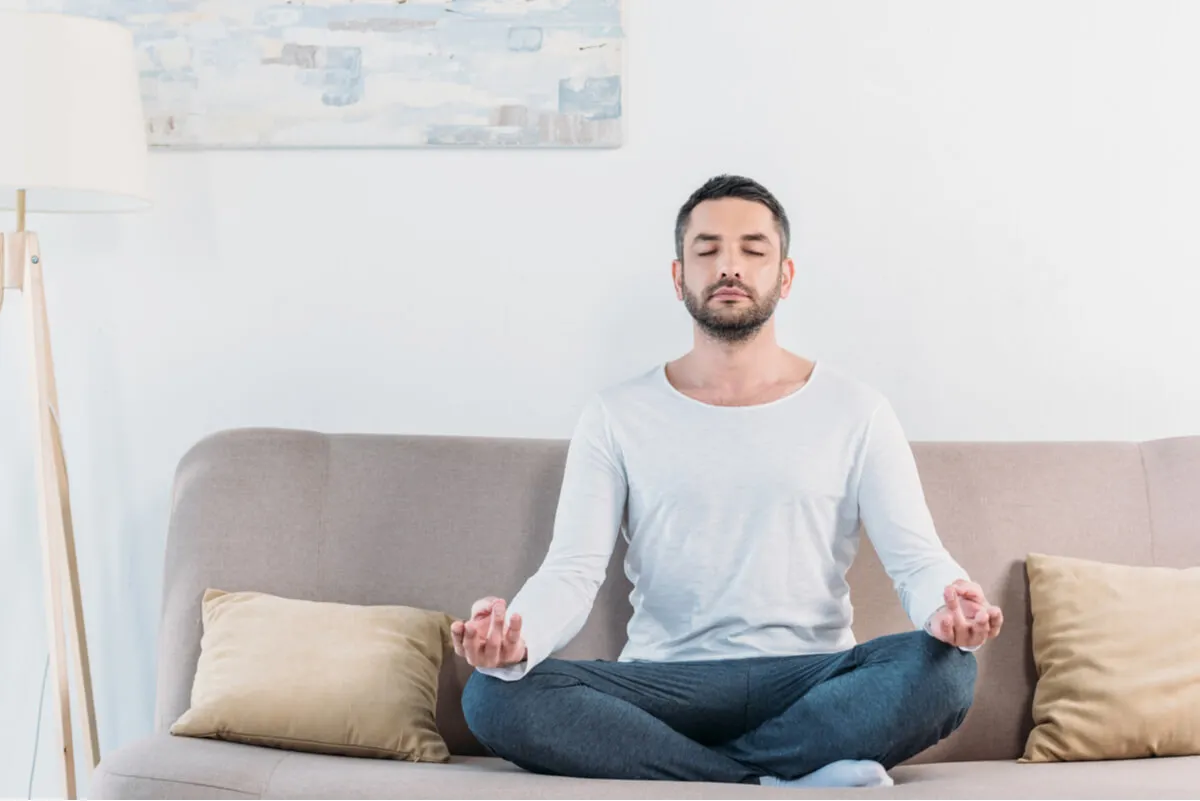Self-hypnosis: Everything You Should Know


Written and verified by the psychologist Maria Fatima Seppi Vinuales
Although the image that comes to mind when we think of self-hypnosis may be a pocket watch or pendulum swinging in front of us, there’s so much more to this practice. If we keep an open mind, we can find self-hypnosis to be a useful tool to achieve wellness and explore our emotional states.
Self-hypnosis does not mean that we lose control of the body, but that we simply function differently for a short time. The objective is to work on brain waves and altered states, to move on to more harmonious ones through suggestions and words.
What is self-hypnosis for?
According to the American Psychological Association, hypnosis is a state involving focused attention and reduced peripheral awareness, with increased responsiveness to suggestion. From this definition, we see how a typical myth associated with unconsciousness falls down.
The same is reaffirmed by Cabrera et al (2013), asserting that hypnosis is a waking consciousness modality achieved through words, visualizations, and gestures. Through these, it’s possible to generate certain excitation in the cerebral cortex so that a more subconscious temporal mode of functioning is achieved.
At that moment, the functioning at the motor, vegetative and sensory levels of thought, behavior, and brain electrical activity changes.
Self-hypnosis is used to gain access to the subconscious, through concentration and guided relaxation. The objective is the reprogramming of emotions.
It takes as a starting point the fact that people tend to function automatically as if they were in a constant state of “autopilot” or inertia. So, by bringing things to mind and focusing on them, we can analyze them, observe our behavior, and design future actions.
When we learn certain behaviors or ways of responding, we get used to them, so self-hypnosis seeks to interrupt that automatic chain to propose new ways.
Uses of self-hypnosis
Self-hypnosis is used in different fields; some of the most frequent are linked to the relief of chronic pain (for example, in people with fibromyalgia) and in the case of anxious symptoms, sleep disorders, smoking cessation, childhood enuresis, and irritable bowel syndrome, just to mention a few.
On the other hand, following Cabrera et al (2013), it’s important to remember that, unlike other medical procedures, self-hypnosis is harmless and compatible with them, so it can be combined.

We think you may be interested in reading this, too: What Are The Different States of Human Consciousness?
What is a self-hypnosis session like?
During self-hypnosis sessions, three strategies will be focused on:
- Visualization.
- Fixation
- Breathing
In terms of visualization, what is sought is that the person imagines him or herself in an environment that brings calm and serenity and that connects with those sensations and emotions that give him well-being.
The idea is to recover all possible details, from colors and aromas to sounds, so as to feel the scene very vividly. Then, when we feel at ease and at our full potential, we try to introduce the element of change that we seek to achieve.
Regarding fixation, it’s used to introduce us into the state of self-hypnosis by fixing the gaze and avoiding distractions. In general, we concentrate or focus on a single point. Then, we continue with the scene of the desired change.
Finally, we also work with breathing, the master key to helping us to relax. We must pay close attention to our breathing and relax it by first noticing how we breathe and then changing to shorter and slower rhythms. Then we proceed to what it is we’d like to change.
Steps and tips to achieve self-hypnosis
Self-hypnosis requires a series of steps to enter the desired state. For this reason, it’s recommended that the first few times we do it, we do it under the guidance of a therapist, since he/she will be able to guide us on the correct way to do it.
1. Choose an appropriate environment
To achieve self-hypnosis, it’s important to create optimal conditions, without distractions. In this sense, we must also turn off the mind, silencing thoughts and even movements.
For example, if we’re used to moving a leg when we rest or tapping our fingers on the table, pay attention to this behavior and interrupt it. Or, in the case of thoughts, if we’re interrupted by everyday worries, it’s key to clear our minds and not get entangled in them.
2. Prepare for relaxation
To do this, you can start with breathing techniques by following a sequence of breathing in, holding, and releasing. This will help you to enter a state of relaxation.
It’s also possible to perform certain exercises to focus the mind and separate from the everyday and material. For example, it’s often recommended is to count from 100 to 0, or to count by intervals of 2 by 2 starting at 50 and decreasing.
You can add phrases such as “I am entering a hypnotic state” or to count back from 10 and, when your reach 0, confirm “I am in a hypnotic state.”
3. Determine and repeat your goals to yourself
This step is about focusing on what you want to achieve or change. Here, it’s important to be precise and concrete and to speak in a positive way. Instead of saying “I’m not going to leave things to the last minute”, you should change it to “I’m going to organize myself better”.
In most cases, it’s recommended to think about these resolutions beforehand. Some people even repeat them in recordings that they later use during self-hypnosis.
4. Visualize yourself in a situation
The brain tends to associate behaviors with situations, so it’s necessary to visualize the change: what actions we undertake, how we feel, and where we are.
The more enriched that scene is, the better. In the cases in which we can’t visualize ourselves or have trouble doing so, we can choose to use a metaphor instead. For example, you can imagine running a race and reaching the finish line.
This scene can be reinforced through the use of an anchor. This can be varied, from words and gestures to some personal objects. The important thing is that, when thinking about it, saying it, or visualizing it, we can remember the suggestion and the goal we would like to achieve.

5. Ending self-hypnosis
Finally, to leave the hypnotic state, it’s best to return little by little by taking a few minutes before returning to your routine.
You can count to 10 while repeating how you feel. For example, use phrases such as “I feel calmer” or “I feel more relieved to continue the day”.
Like this article? You may also like to read: What is Positive Psychology and What Is It Used For?
Motivation for change is essential
When faced with certain situations of suffering, carrying out therapeutic actions serves to alleviate the discomfort. Self-hypnosis can be complemented by psychotherapy and medical approaches.
However, above all, it’s about commitment and motivation for change. It’s a great way to encourage us to explore and meet face-to-face with situations that we dislike and may be painful to leave behind.
In this sense, it’s important to know that both self-hypnosis and any other technique used will guide us to achieve results, as long as we practice and perform them with some constancy.
All cited sources were thoroughly reviewed by our team to ensure their quality, reliability, currency, and validity. The bibliography of this article was considered reliable and of academic or scientific accuracy.
- Cabrera Macías, Yolanda, López González, Ernesto, Ramos Rangel, Yamila, González Brito, Mónica, Valladares González, Anais, & López Angulo, Laura. (2013). La hipnosis: una técnica al servicio de la Psicología. MediSur, 11(5), 534-541. Recuperado en 13 de abril de 2021, de http://scielo.sld.cu/scielo.php?script=sci_arttext&pid=S1727-897X2013000500008&lng=es&tlng=es.
- Castañeda, E. & Krikorian, A. (2018). Aplicaciones actuales de la hipnosis clínica en Latinoamérica: una revisión sistemática de la literatura. Avances en Psicología Latinoamericana, 36(2), 269-283. doi: http://dx.doi.
org/10.12804/revistas.urosario.edu.co/apl/a.5488
This text is provided for informational purposes only and does not replace consultation with a professional. If in doubt, consult your specialist.








